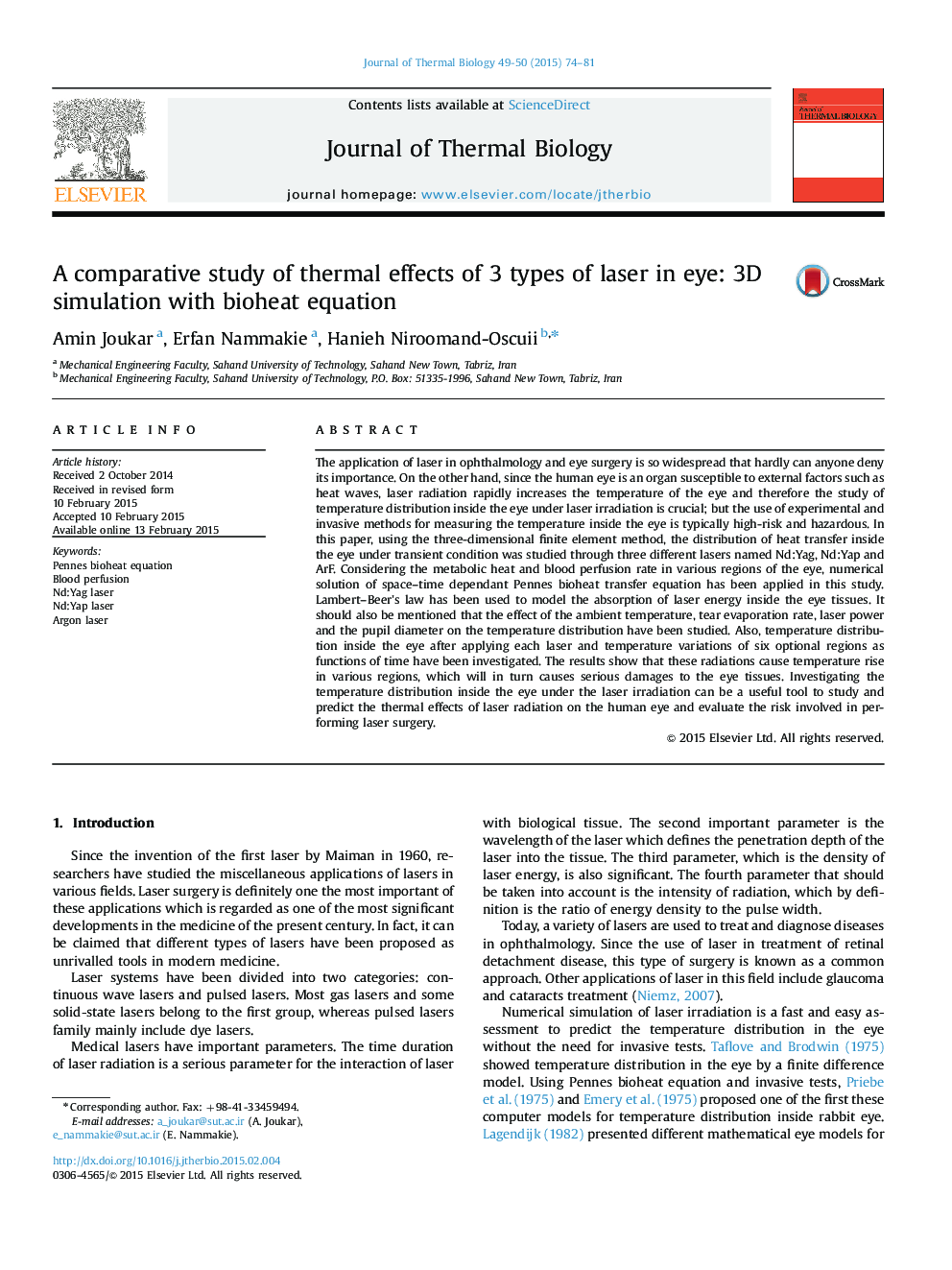| کد مقاله | کد نشریه | سال انتشار | مقاله انگلیسی | نسخه تمام متن |
|---|---|---|---|---|
| 2842760 | 1571096 | 2015 | 8 صفحه PDF | دانلود رایگان |

• In our model, the effect of the blood perfusion and metabolic heat is considered.
• The maximum temperature under Nd:Yag laser equals to 110 °C which occurs in retina.
• The maximum temperature under Nd:Yap laser equals to 49 °C which occurs in retina.
• The maximum temperature under Argon laser equals to 207 °C which occurs in cornea.
The application of laser in ophthalmology and eye surgery is so widespread that hardly can anyone deny its importance. On the other hand, since the human eye is an organ susceptible to external factors such as heat waves, laser radiation rapidly increases the temperature of the eye and therefore the study of temperature distribution inside the eye under laser irradiation is crucial; but the use of experimental and invasive methods for measuring the temperature inside the eye is typically high-risk and hazardous. In this paper, using the three-dimensional finite element method, the distribution of heat transfer inside the eye under transient condition was studied through three different lasers named Nd:Yag, Nd:Yap and ArF. Considering the metabolic heat and blood perfusion rate in various regions of the eye, numerical solution of space–time dependant Pennes bioheat transfer equation has been applied in this study. Lambert–Beer's law has been used to model the absorption of laser energy inside the eye tissues. It should also be mentioned that the effect of the ambient temperature, tear evaporation rate, laser power and the pupil diameter on the temperature distribution have been studied. Also, temperature distribution inside the eye after applying each laser and temperature variations of six optional regions as functions of time have been investigated. The results show that these radiations cause temperature rise in various regions, which will in turn causes serious damages to the eye tissues. Investigating the temperature distribution inside the eye under the laser irradiation can be a useful tool to study and predict the thermal effects of laser radiation on the human eye and evaluate the risk involved in performing laser surgery.
Journal: Journal of Thermal Biology - Volumes 49–50, April–May 2015, Pages 74–81